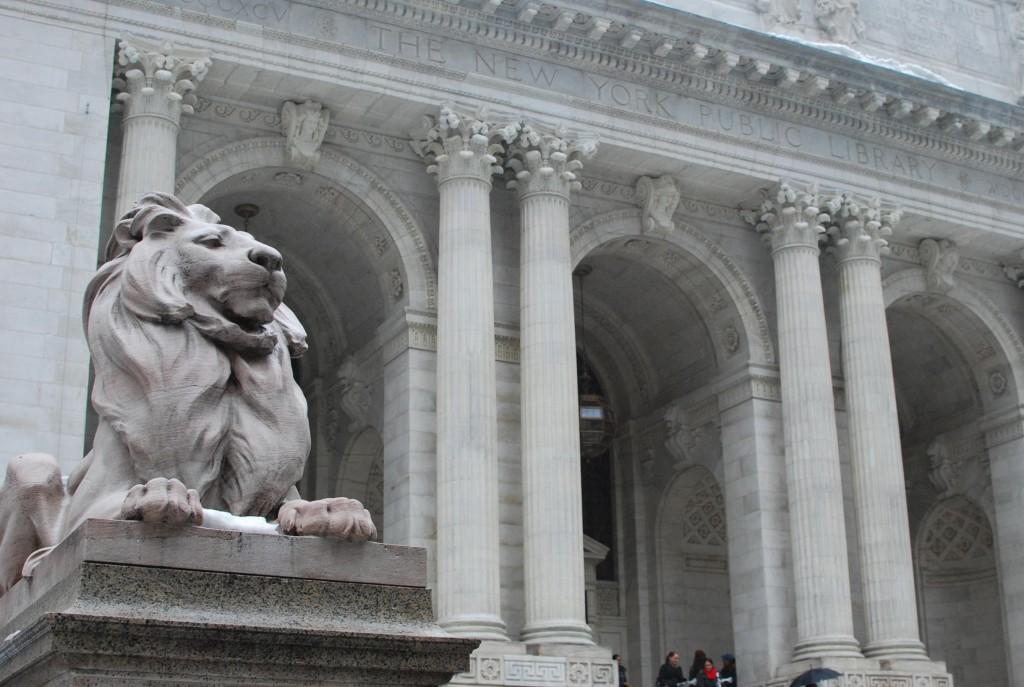At 100 Years, the NYPL’s Main Branch Is Still a Different Kind of Library
Stephen A. Schwarzman Branch Celebrates Milestone, Hosts Art Exhibitions
July 23, 2011

Published: February 16, 2011
The iconic lion statues sitting before the Stephen A. Schwarzman branch of the New York Public Library are so widely recognized that they have become a symbol of the city itself. Yet despite the fame of this beaux-arts architectural masterpiece, little is known to the average New Yorker about what exactly is housed within. This year marks the 100th anniversary of the completion of the building, making it an appropriate time to pay the library a visit.
The Schwarzman branch is one of the foremost research libraries in the world, housing a collection of rare, significant and popular books and materials that draw researchers of all kinds from around the world to assist them with their work. The scope of the collection ranges from ancient manuscripts to baseball cards and comic books.
However, bookshelves are noticeably absent from the entry and main areas of the building, for this is not a typical branch library like others found around the city. There is no shortage of things to see in the Schwarzman branch even for those who have no specific purpose to their visit, thanks to several exhibitions housed inside.
Currently, the main exhibition is titled “Three Faiths: Judaism, Christianity, Islam.” Located just across the lobby from the main entrance, this exhibition presents part of the library’s collection of religious texts in a fascinating and informative display. These ancient writings are all held sacred to some or all of the three Abrahamic religions, and are logically juxtaposed to highlight the key similarities and differences among the faiths. The texts cover a broad range of topics, purposes, styles, languages and time periods.
The exhibit is not only informative; it is also notable for its pieces of great historical importance and artistic achievement. Here you will find the library’s copy of the Gutenberg Bible, one of only 49 surviving copies in the world today, as well as a copy of the first book ever printed in the British Colonies, a book of Psalms. There are beautifully decorated pages from the Quran, illuminated pages from the Bible and Torah, pages with intricate paintings and several etchings by the Dutch master Rembrandt. This collection will only be on display until Feb. 27, so be sure to see it before it leaves.
Lining the hallway of the third floor is another exhibit that simultaneously stands as an interesting display of art and a testament to the inspiring powers of the library. Titled “Radioactive,” the exhibit shows the work of Lauren Redniss, who spent countless hours during the last two years researching the life of Marie and Pierre Curie, and then creating an illustrated biography of their life. The final product is a new book titled “Marie and Pierre Curie: A Tale of Love and Fallout.” Most of the illustrations in her book were created using a photographic method known as cyanotype printing, a camera-less process that uses the UV rays of the sun to color chemical-coated paper that has been drawn on. The effect of this method creates an illusion of inner luminescence that invokes the spirit of the radioactive research of the Curies.
The exhibition combines images from several of Redniss’ pages in the book (including some of the original cyanotypes) with pieces from the library collection that inspired her work. At one end of the hallway, there is also a portion of the exhibit that describes how Redniss created from scratch the typeface that is used in her book. “Radioactive” will continue until April 17, so there is still plenty of time to stop by and admire this exhibit.
And if you happen to be feeling nostalgic, be sure to stop by the children’s section on the ground floor before you leave. In the middle of the room, surrounded by racks of picture books, is a display case containing the stuffed animals that originally inspired the creator of Winnie the Pooh. The stuffed toys originally belonged to Christopher Robin Milne, whose father, A.A. Milne, co-created the adventures of Winnie the Pooh along with artist Ernest H. Shepard. All of the major characters are there, including Tigger, Eeyore, Piglet and Pooh himself. It will bring back memories for any fan of the series.
The library is always free of charge, so if you are searching for an interesting and economical alternative to the city’s museums, now is the time to visit this New York icon.











